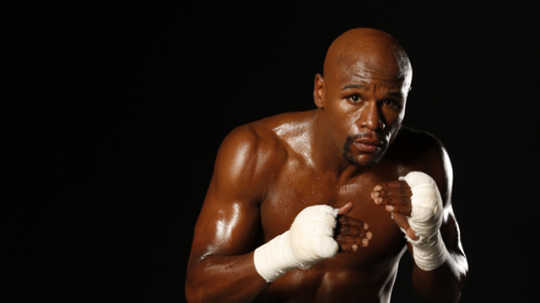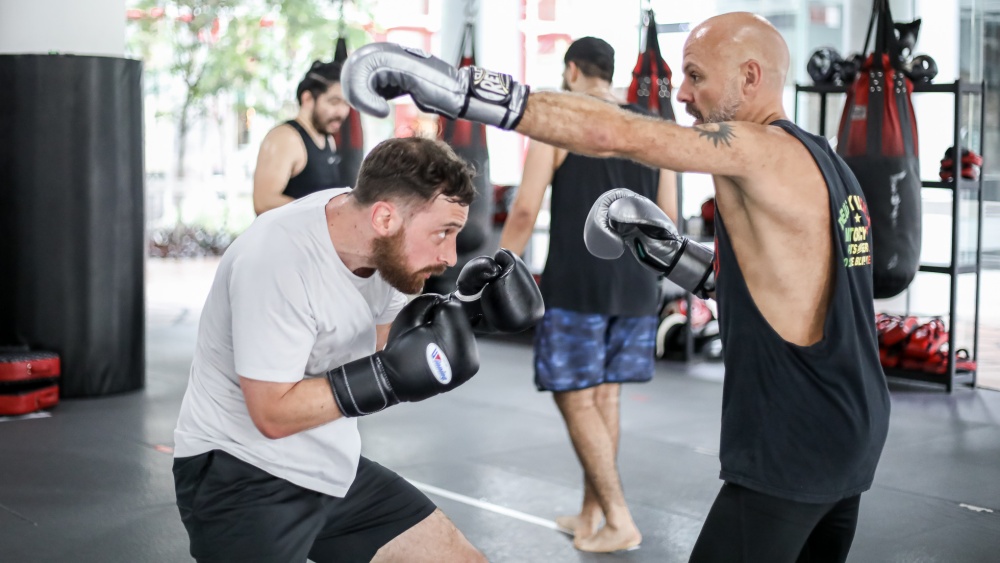The shoulder roll is one of the most unorthodox boxing techniques you can pick up at your boxing gym. Master it, and you gain the ability to block and parry shots using incredible reflexes. However, it could leave you open and vulnerable if you don’t execute with the proper technique.
Some of the most talented professional fighters in the history of boxing have featured the shoulder roll technique to varying degrees. The biggest names include former multiple-division world champion James “Lights Out” Toney, super featherweight standout Adrien “The Problem” Broner, legendary middleweight Bernard “The Executioner” Hopkins, Cuban sensation Guillermo “El Chacal” Rigondeaux, and of course, box office king Floyd “Money” Mayweather Jr.
The shoulder roll gives you the ability to maneuver quickly, whether offensively or defensively, with great effect against any style of opponent. You can deflect shots with the shoulder, parry with your elbows and forearms in addition to your gloves, and counter with sharp combinations that hit the mark clean.
Before you can add the shoulder roll technique to your boxing game, you have to understand what it is, and the science behind it. Once you have a good grasp of the concept, you can train the shoulder roll and incorporate it into your skillset.
Today, Evolve Daily shares how to add the shoulder roll to your boxing game.
What Is The Shoulder Roll?
Also known as the Michigan Defense, the technique takes its name from fighters who learned to use it in Detroit, taught by old-school trainers who developed the legendary defensive maneuver. The technique makes use of a boxer’s large lead shoulder to deflect an opponent’s attacks in close quarters. The other arm is used to catch and counter.
By rolling punches off the shoulder, the incoming attack causes little to no damage. Furthermore, it destabilizes your opponents and leaves them vulnerable for a split second, which is enough time to tag them with a quick and powerful counter. It’s considered an advanced technique that requires tremendous practice.
Why Add The Shoulder Roll To Your Game?
The shoulder roll is more effective at mitigating damage compared to straight blocking. It is more energy-efficient. If executed correctly, you can fend off entire combinations by just rolling your shoulders to the rhythm of an opponent’s attack, without the need for tracking punches or worrying about glove position.
You simply need to anticipate the direction a punch is coming from and roll away to deflect it. It sounds simple enough in concept, but it is definitely difficult to perfect.
The truth about boxing defense is that you cannot sustain blocking punches with your arms and hands. Eventually, an opponent’s power will start to overwhelm you if you choose this route. Techniques like the shoulder roll were created to offer a different look on defense.
How To Perform The Shoulder Roll
To execute the shoulder roll, you need to first put yourself in the optimal range for the technique to be effective. This means inching closer to an opponent in the defensive stance and not backing away despite facing constant pressure. Trust in your defensive skills.
You must have a clear idea of what you want to accomplish with the shoulder roll, and combine timing and reflexes to be effective. It’s not an easy technique, by any means, but with enough practice in the gym, you’ll be able to add it to your game.
1) Assume The Basic Defensive Stance
Tuck your chin into your lead shoulder, keeping your lead forearm close to your side to protect your ribs and abdomen. The rear glove should be kept tucked into the other side of the chin, ready to catch shots on the opposite end.
Depending on the direction of an incoming punch, anticipate the punch coming in and roll the attack off your shoulder. If the opponent comes back with the opposite hand in a combination, roll in the opposite direction. Quickly determining where a punch is coming from is key to the success of this technique.
Don’t forget to move your head and change levels every so often, to keep yourself a moving target. Keep your core tight, and don’t step backward.
2) Move Your Upper Body
You can bend your torso forward and backward on the X-plane to further mitigate the impact of an opponent’s punch. Just lean slightly forward or backward, leading with your shoulder. But don’t overdo it to the point where you may lose your balance.
In addition, you can also duck and weave under punches as you would normally do in the traditional stance. Using the shoulder roll doesn’t mean you rely solely on it. You can combine the shoulder roll with your standard blocks and parries. It has to integrate seamlessly into your defensive style to become effective.
3) Counter With Conviction
The shoulder roll defense is an effective parry, whether you block with the shoulder or with your arms. Your opponent’s brief moment of vulnerability will give you the opening you need to come back hard with a counter that is unexpected.
The straight counter is the best choice punch to counter with after rolling to the inside because it takes advantage of the natural momentum of your body. This counter can be followed up by a lead hook.
You can also throw a right uppercut, depending on the angle at which you rolled your shoulder. This uppercut counter is tremendously effective because it doesn’t leave you open as a normal uppercut would.
In addition, you can go to the jab quite often from this defensive stance. With your fist at waist level, ensure that your jab is swift and snappy, almost like a flicker jab. You can stun an opponent with this jab, and throw a combination behind it.
If you’re not throwing the jab to initiate a combination, bring the hand back to its original position quickly and assume a defensive position.
Last but certainly not least, practice the shoulder roll defense extensively in training. Only once you’ve logged countless hours honing this technique both in theory and in sparring application will you be able to use it effectively.
You may also like:

















